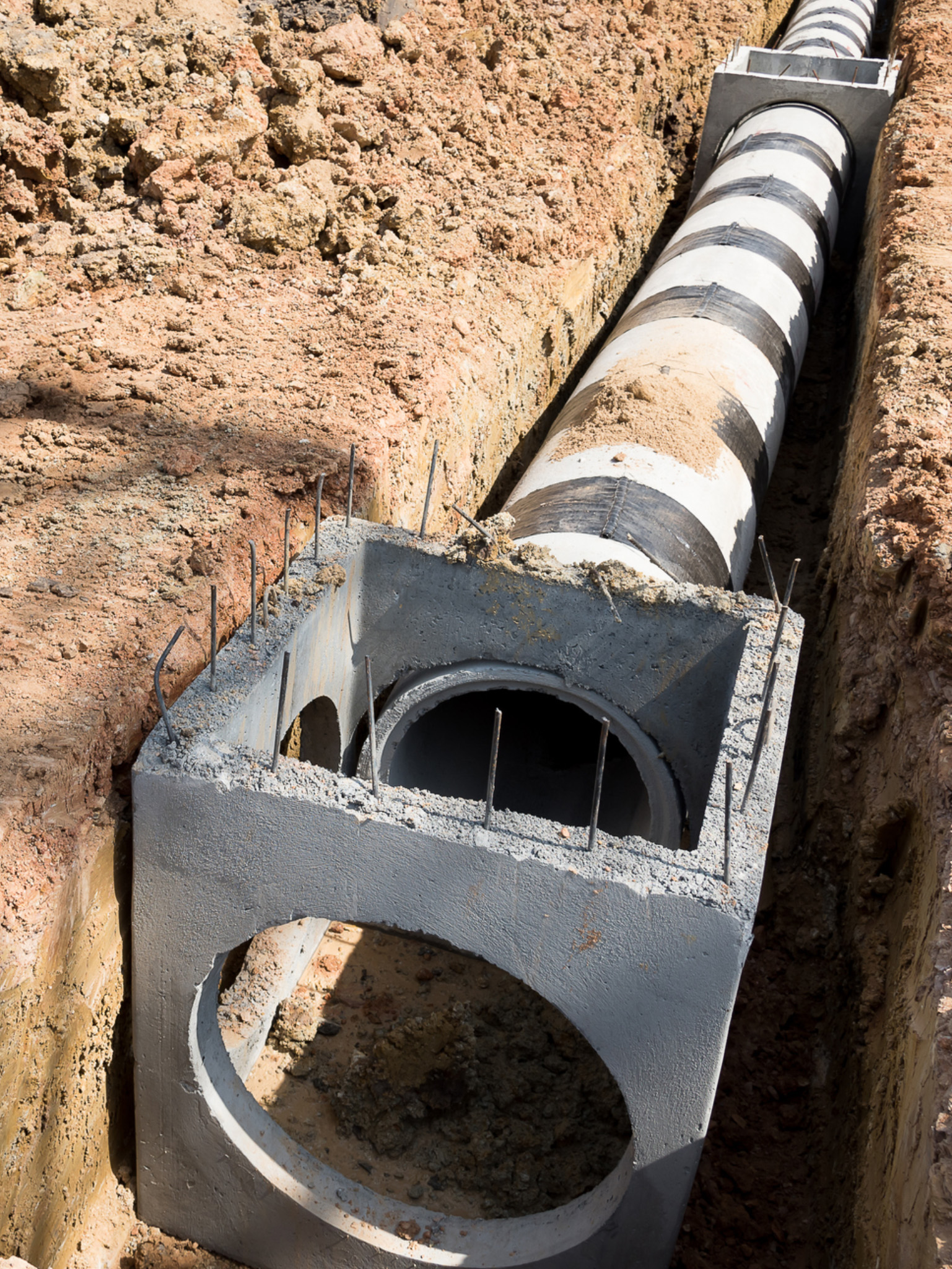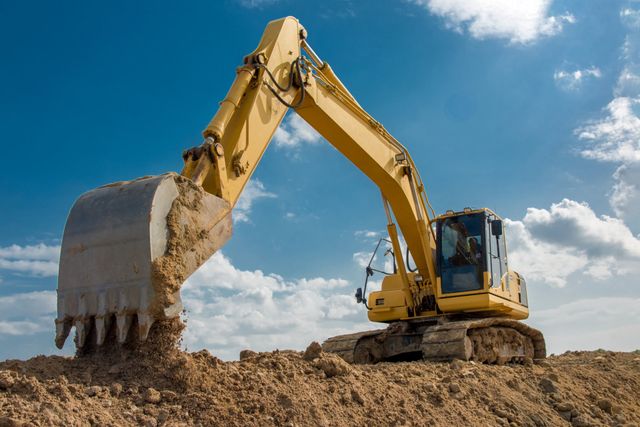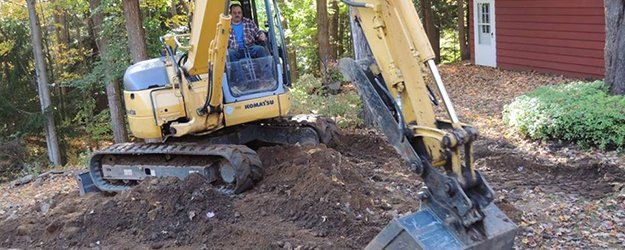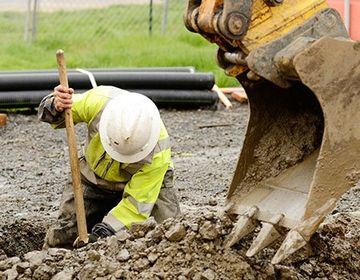Professional Septic Ohio - Trusted Septic Tank Specialists in Ohio
Professional Septic Ohio - Trusted Septic Tank Specialists in Ohio
Blog Article
Thorough Expedition: The Science Behind Superior Excavation Practices
The world of excavation techniques is a domain where science intertwines with craftsmanship to discover the enigmas hidden underneath the planet's surface area. From old hand devices to modern hydraulic excavators, the development of excavation methods has been a testament to human ingenuity and technical advancements. However, what really sets remarkable excavation techniques apart is a deep understanding of geological concepts, paired with the utilization of advanced tools and methods. By checking out the scientific research behind these methods, we can discover the tricks that lie beneath our feet and appreciate the accuracy and know-how that go right into every dig.
Development of Excavation Methods
Throughout history, the advancement of excavation methods has played a vital function in advancing building and construction methods and archaeological explorations. From the rudimentary devices used by our ancestors to the sophisticated equipment utilized in modern-day times, the development of excavation approaches has significantly changed exactly how we come close to different projects.
In ancient times, manual work with standard tools such as shovels, wheelbarrows, and pickaxes was the key technique of excavation. This labor-intensive procedure limited the depth and extent of excavations, frequently causing sluggish progress and restricted accessibility to specific websites. Nevertheless, as people advanced, so did the tools and techniques made use of for excavation.
The Industrial Transformation noted a transforming point in excavation exercise with the intro of steam-powered machinery. This advancement changed the field, enabling faster and extra comprehensive excavations. In modern times, modern technology plays a critical function in excavation, with improvements like general practitioner systems, drones, and 3D scanning enhancing precision and effectiveness in the area. The advancement of excavation techniques continues to form the method we develop, discover, and recognize the globe around us.
Role of Technology in Excavation

The assimilation of cutting-edge technology has essentially transformed the field of excavation, boosting accuracy and effectiveness to unprecedented levels. One of the crucial technological innovations that has actually dramatically impacted excavation practices is the utilization of GPS systems. These systems allow for specific mapping of excavation sites, enabling drivers to properly find below ground energies and structures. In addition, making use of telematics in excavation equipment has enabled real-time surveillance of equipment performance, bring about positive upkeep and boosted operational efficiency.
Furthermore, the introduction of 3D modeling and simulation software has streamlined the preparation procedure for excavation projects. Operators and engineers can now envision the entire excavation process prior to beginning, determining possible obstacles and optimizing process. In combination with this, the implementation of drones in excavation activities has actually assisted in airborne studies, volumetric dimensions, and site evaluations with unequaled rate and precision.
Geological Principles in Excavation
An understanding of geological concepts is vital for making sure the structural honesty and security of excavation sites. Geological factors play a crucial function in determining the expediency and security of excavation jobs (lancaster excavation). One essential geological principle to think about is the type of soil or rock present at the site. Different soil types, such as clay, sand, or crushed rock, have differing degrees of security and call for various excavation strategies. As an example, natural soils like clay may require additional assistance to protect against collapses, while sandy dirts might be vulnerable to Read Full Article erosion during excavation.
By conducting detailed geological surveys and evaluation, excavators and engineers can develop methods to mitigate dangers and ensure the effective completion of excavation tasks. Eventually, including geological concepts right into excavation methods is crucial for attaining risk-free, effective, and lasting results.

Most Recent Devices for Excavation
In the world of excavation techniques, modern innovations in devices have actually transformed the effectiveness and precision of excavation processes. One of the newest tools making waves in the industry is using drones equipped with advanced imaging technology. These drones can provide detailed airborne studies of excavation websites, providing real-time data on topography and potential hazards. This information help in far better preparation and decision-making during the excavation process.
An additional cutting-edge device acquiring appeal is the application of 3D printing technology for creating custom excavation equipment. This permits the manufacturing of specialized tools that are tailored to the specific requirements of a task, boosting effectiveness and lowering downtime.
Moreover, developments in products science have actually resulted in the advancement of stronger and much more sturdy excavation devices. excavating ohio. Tungsten carbide-tipped excavator add-ons, for example, deal exceptional efficiency in challenging ground problems, enhancing efficiency on-site
Scientific research's Effect on Excavation Practices

Moreover, developments in materials science have led to the production of stronger, more durable excavation devices and devices. The use of composite materials in shovels and miners has actually improved their efficiency and durability, ultimately boosting productivity on excavation sites. In addition, clinical research study on soil auto mechanics and geotechnical engineering has actually provided useful understandings into dirt habits, enabling excavation specialists to make educated choices relating to excavation methods and dirt stablizing methods. Overall, science proceeds to drive development and renovation in excavation practices, making excavation jobs more effective, affordable, and lasting.

Final Thought
Finally, the advancement of excavation methods has actually been substantially affected by innovations in technology and a much deeper understanding of geological concepts. The current devices and devices used in excavation have improved effectiveness and precision in the field. The application of clinical knowledge has actually substantially boosted excavation methods, bring about a lot more sustainable and reliable techniques for excavating numerous kinds of materials.
In the realm of excavation practices, modern innovations in tools have actually revolutionized the performance and accuracy of excavation procedures. By leveraging scientific concepts, the excavation sector has actually been able to significantly boost efficiency, precision, and safety and security in excavation procedures. GPR enables excavation teams to non-invasively scan and map subsurface structures, energies, and potential hazards, allowing them to intend excavation tasks with higher precision and decreased danger of accidents.
Additionally, scientific study on soil mechanics and geotechnical design has actually offered beneficial understandings into soil actions, enabling excavation important site professionals to make enlightened decisions regarding excavation approaches and soil stabilization techniques. Overall, scientific research continues to drive innovation and renovation in excavation practices, making excavation tasks a lot more efficient, cost-efficient, and sustainable.
Report this page